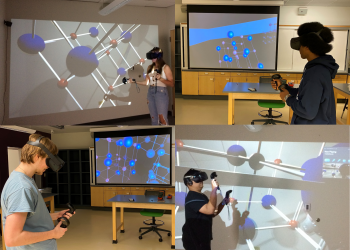
When studying physics, we can study large systems (such as free fall under gravity or even galaxies) or small systems such as atoms in a crystal. For many technological applications, it is essential to study the property of matter rooted in the arrangement of atoms in solids. Solid-state physics is a branch of physics that focuses on how the arrangement of atoms can lead to different (electrical, magnetic, mechanical, etc) properties of materials. This is critical when looking for materials to advance the current technologies or to propose new solutions. In real life, physicists and engineers investigate small-scale physics (for example, using advanced transmission electron microscopy techniques). They measure properties of that same system and try to come up with theories that build the bridge between the arrangement of atoms and the properties that we can measure in the lab (for example, electrical resistance). One challenge that all of us face when doing this kind of research is the three-dimensional visualization of atomic structures. Our books, our notes, even monitors provide two-dimensional visuals...
Dr. Beik Mohammadi and her research team use virtual reality (VR) simulations to developed interactive three-dimensional structures to enhance solid-state physics education. Using such models helps us dive deeper into the three-dimensional word of atoms in a fun interactive way! The hope is to teach solid-state physics to physics and even non-physics majors!
Current student researchers working on this project:
Joshua Leaney, 2021-present
Former student researchers working on this project:
Justin Chang
Related publications:
J Beik Mohammadi, J Seefeldt: Virtual Reality Simulations for Solid State Physics Education, Bulletin of the American Physical Society 65 (2020)
